HL-20 with Flight Instrumentation Blocks
This example shows NASA's HL-20 lifting body and controller modeled in Simulink® and Aerospace Blockset™ software. This example model simulates approach and landing flight phases using an auto-landing controller. The Visualization subsystem uses aircraft-specific gauges from the Aerospace Blockset Flight Instrumentation library.
The HL-20, also known as personnel launch system (PLS), is a lifting body re-entry vehicle designed to complement the Space Shuttle orbiter. Designed to carry up to ten people and very little cargo[1], the HL-20 lifting body was to be placed in orbit either launched vertically via booster rockets or transported in the payload bay of the Space Shuttle orbiter. The HL-20 lifting body was designed to have powered deorbiting accomplished with an onboard propulsion system, while its reentry was to be nose-first, horizontal, and unpowered.
The HL-20 lifting body was developed as a low cost solution for getting to and from low Earth orbit. The proposed benefits of the HL-20 were reduced operating costs due to rapid turnaround between landing and launch, improved flight safety, and ability to land conventionally on runways. Potential scenarios for the HL-20 were orbital rescue of stranded astronauts, International Space Station crew exchange if the Space Shuttle orbiter was not available, observation missions, and satellite servicing missions.
mdl = "HL20Gauges";
open_system(mdl);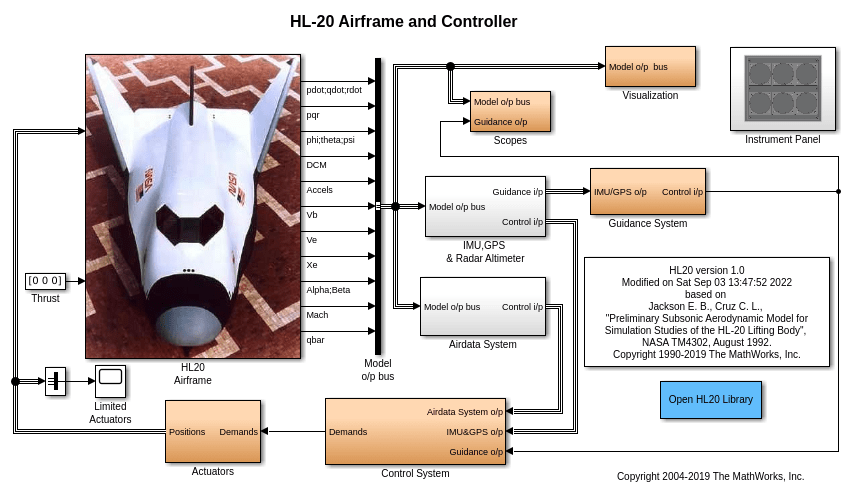
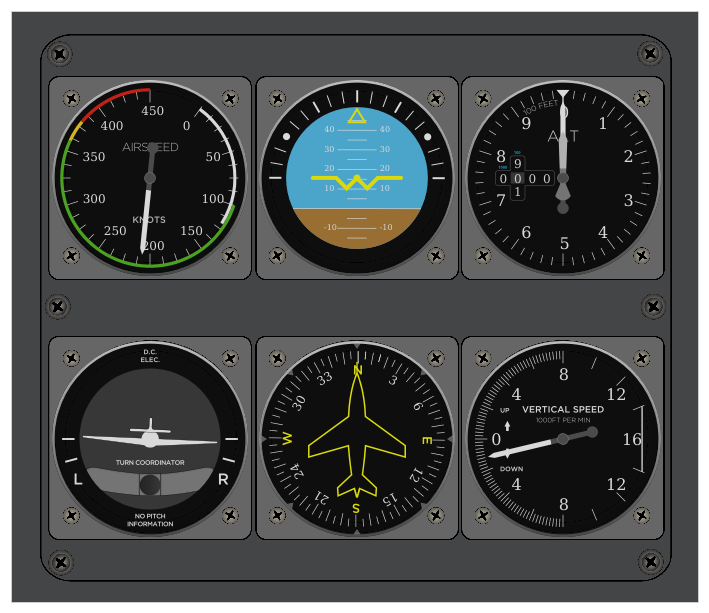
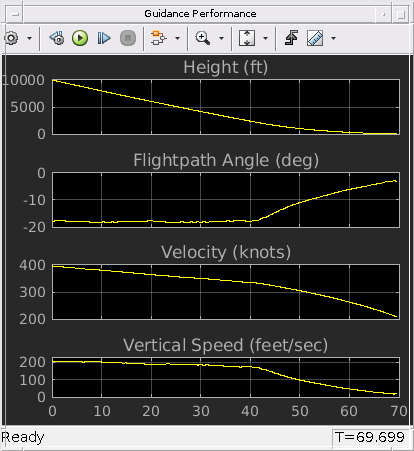
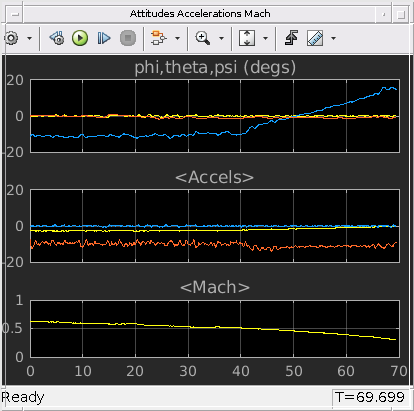
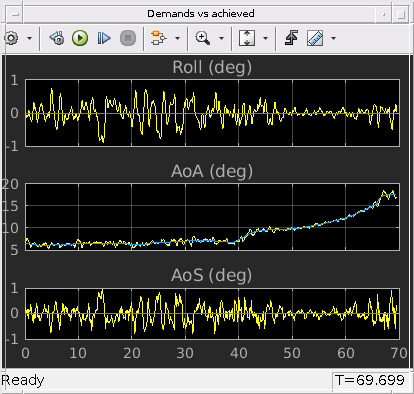

Additional information about HL-20
[1] Jackson E. B., Cruz C. L., "Preliminary Subsonic Aerodynamic Model for Simulation Studies of the HL-20 Lifting Body," NASA TM4302 (August 1992)